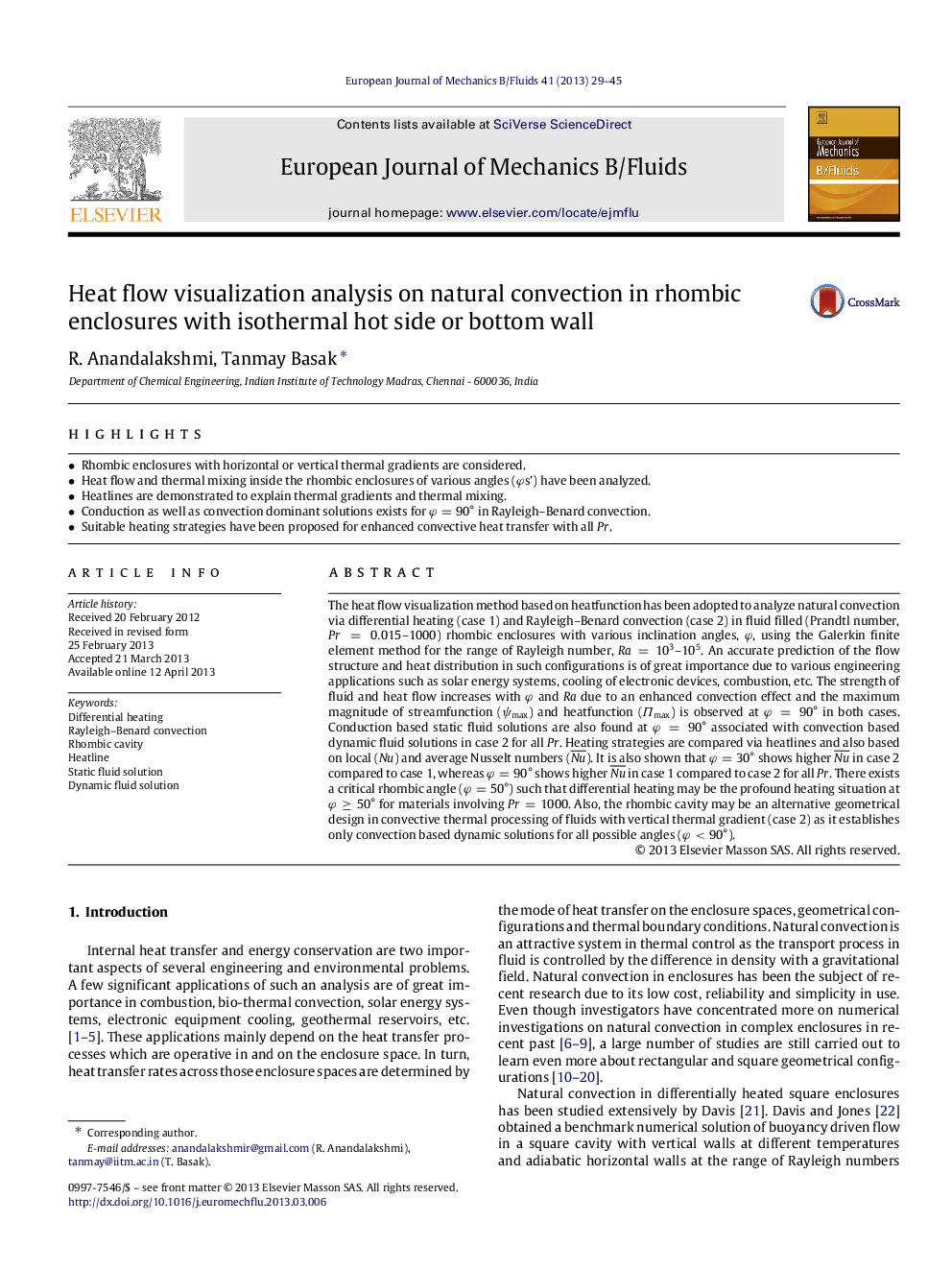| Article ID | Journal | Published Year | Pages | File Type |
|---|---|---|---|---|
| 650442 | European Journal of Mechanics - B/Fluids | 2013 | 17 Pages |
Abstract
The heat flow visualization method based on heatfunction has been adopted to analyze natural convection via differential heating (case 1) and Rayleigh-Benard convection (case 2) in fluid filled (Prandtl number, Pr=0.015-1000) rhombic enclosures with various inclination angles, Ï, using the Galerkin finite element method for the range of Rayleigh number, Ra=103-105. An accurate prediction of the flow structure and heat distribution in such configurations is of great importance due to various engineering applications such as solar energy systems, cooling of electronic devices, combustion, etc. The strength of fluid and heat flow increases with Ï and Ra due to an enhanced convection effect and the maximum magnitude of streamfunction (Ïmax) and heatfunction (Î max) is observed at Ï=90° in both cases. Conduction based static fluid solutions are also found at Ï=90° associated with convection based dynamic fluid solutions in case 2 for all Pr. Heating strategies are compared via heatlines and also based on local (Nu) and average Nusselt numbers (Nu¯). It is also shown that Ï=30° shows higher Nu¯ in case 2 compared to case 1, whereas Ï=90° shows higher Nu¯ in case 1 compared to case 2 for all Pr. There exists a critical rhombic angle (Ï=50°) such that differential heating may be the profound heating situation at Ïâ¥50° for materials involving Pr=1000. Also, the rhombic cavity may be an alternative geometrical design in convective thermal processing of fluids with vertical thermal gradient (case 2) as it establishes only convection based dynamic solutions for all possible angles (Ï<90°).
Related Topics
Physical Sciences and Engineering
Chemical Engineering
Fluid Flow and Transfer Processes
Authors
R. Anandalakshmi, Tanmay Basak,
